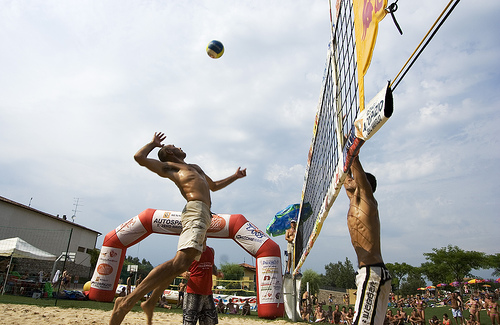
With summer on the way, many parents scramble to find activities the kiddos can participate in safely, and many turn to sports to keep little minds and bodies occupied. But just how safe are youth sports? And what do parents need to know prior to signing their child up for certain activities?
Sports provide exercise as well as natural stress relief. Still, faulty techniques and equipment can lead to injury and death. Here’s what everyone should know about safety in youth sports.
1. Providing Medical Personnel
According to the National Athletic Trainer Association, over 30 million American children participate in sports of some sort. The association establishes guidelines for how to deal with certain types of traumatic injuries that occur during competitions. Cardiac arrest and head and neck injuries require rapid intervention to avoid permanent harm.
Medical personnel need to arrive quickly to treat such injuries, and schools and playgrounds should ensure easy access in the event of an accident. For example, entrance ways and exits must allow for emergency vehicles to fit through.
2. Protecting Title IX and Combating Harassment
Larry Nasser, the USA Gymnastics and Michigan State University trainer, made headlines in 2018 when he was sentenced for sexually abusing multiple teenage girls. His case highlights a seldom-discussed reality — many young girls participating in youth sports become victimized by the adults they trust most.
Title IX states that women must receive equal opportunity in scholastic athletics if the school she attends accepts federal funds as most colleges and universities do. The penalty for failing to comply means losing money for such programs.
3. Understanding the ADA and Youth Sports
According to the Americans with Disabilities Act (ADA), schools must make reasonable accommodations for athletes with special needs, although said competitors must perform at an equivalent level as their classmates. Facilities must have handicapped accessibility and follow ADA guidelines for things such as the width of bathroom door openings. Facilities also must provide equal access to weight rooms, steam rooms and saunas and leave room to navigate around various equipment.
4. Stricter Testing Measures
To protect young athletes, facilities must ensure their athletic equipment remains in good working order. Improperly maintained helmets and padding leave youth sports participants open to injury or even death.
Protecting the brains of athletic youth must remain a priority. While most people understand the need for helmets in contact sports such as football, some underestimate the importance of such gear in activities such as baseball and softball.
Girls, in particular, run higher risks of having concussions and traumatic brain injuries misdiagnosed, so parents do well to seek follow-up care for headaches, flashing lights and other visual disturbances or nausea and vomiting if their daughter exhibits said symptoms.
5. Changing Youth Football Rules
Football is where much of the sports-related head trauma among young athletes occurs. Additionally, the muscles, nerves and bones of the spine become vulnerable to permanent injuries which can sometimes lead to paralysis.
Recently, a number of professional athletes stepped forward to describe the risks of head trauma through the sport. As a result, many youth leagues adopted flag football rules instead of the traditional tackle variety. This keeps young bodies moving while reducing the risks of concussions and brain damage.
6. Speaking with Kids About Sports Safety
Many children who quit school or playground sports do so because they become injured. To reduce the risk of sports-related injuries, it is a good idea for parents to have all children undergo a physical prior to their hitting the field.
Sharp blows aren’t the only things hurting young athletes. The risk of dehydration on hot, sunny days compels parents to discuss carrying a water bottle at all times with their children. Additionally, youth benefit from knowing the warning signs of heat exhaustion, cramps and stroke so they can seek cooler temperatures before overheating.
7. Bringing Parents on Board
Sadly, some children who lose patience for sports do so because of belittlement and beleaguering by adults. It’s critical for parents to model proper sportsman-like behavior for their little ones.
Adults shouldn’t scold their child for making an error, either. Instead, they can teach children how to congratulate the victorious team graciously and to learn from their mistakes without feeling shamed.
Young Athletes Can Become Healthy Adults
Sports help children learn the joy of moving their bodies. Additionally, participating in sports at a young age helps teach kids the value of physical exercise. When it comes to keeping children safe while they play, though, they deserve nothing but the best.




